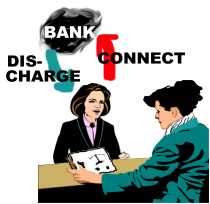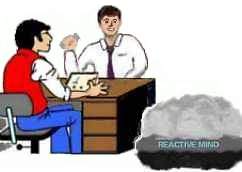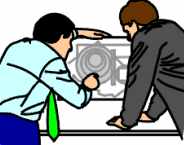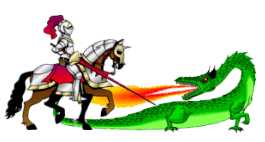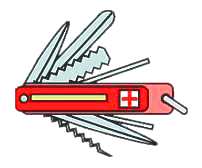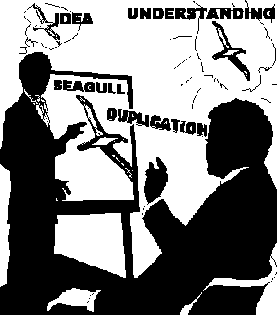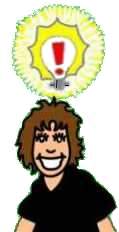Conceptual Understanding |
||||||||||
|
There are two types of
understanding when it comes to study.
Literal understanding is not what we want to accomplish in study. You see extreme examples of literal understanding in persons who just don't understand jokes. They understand the words but don't get the joke. You see literal understanding in action by the bureaucrat who makes others' lives miserable by having them do strange things "to follow regulations". The religious fanatic, who is ready to kill for what his holy book says - as he understands it - is a victim of literal understanding. These are the extremes. Literal understanding means the person is fixated on the meaning of words and does not perceive the ideas or intentions behind the communication very well. Conceptual understanding, on the other hand, has a deeper but also simpler view on things. The person going for conceptual understanding is not totally stuck in the symbols and meanings of words. They are basically totally aware of the communication formula involved. They understand there is an author or teacher presenting something for them to duplicate and understand. What the teacher is trying to teach is in the teacher's mind as a concept, an idea, at the beginning of the action.
To relay it, the teacher has had to use words and symbols. It is not always easy to find the right words to express oneself. Even expert writers and poets can spend days getting it just right. There is a translation process going on. The ideas may be crystal clear. Getting the ideas into words so they can be communicated takes work and is far from 100% accurate. The writer or teacher may have to express it in several different ways before he is satisfied. The student, on the other hand, may not have the language skills necessary to understand the finer points of what the teacher is saying. They both have to work at it to make a perfect transmission and duplication possible. The basic process in any communication is then that the origination-point (teacher) has a concept or idea. He wants the receipt-point (student) to duplicate and understand that idea. In order to do that he has to use words, symbols, and actions to get it across. It has to travel through the physical universe. If the teacher is successful, the student will end up with a perfect duplicate and understanding of the idea or concept. Now the student can think with it, put it in his own words, discard it for that matter or realize it is very important. He owns that datum completely as he has made it his own. It does not depend on words as it didn't depend on words when the teacher first tried to formulate it. In study for application that is what we strive after: conceptual understanding. Having that, the student will have achieved the ability to evaluate and judge data from his own point of view. To make such a high level of communication possible it is equally important that the student understands the words or symbols used. Each word used should be understood by the student to a point where the student not only knows the definition but is able to understand the word itself conceptually. The whole basis of this comes down to the fact that the word isn't the thing. The word 'Rose' does not have a smell nor does it in particular look beautiful. Only when you realize it is a symbol for a beautiful flower can you associate it with a pleasant smell and beauty. Thus we have three elements here:
In Study Technology the words and symbols themselves should be cleared to conceptual understanding. When the student looks up words in the dictionary he should read the small-print that explains where the word originally came from. This is a great help in getting the concept of a word. When both teacher and student have a conceptual understanding of the words, conceptual understanding through communication is possible.
When studying we are going for conceptual understanding of ideas, principles, facts, and points of view. Once that is accomplished we see the student brighten up. She has not only duplicated the words, she has duplicated and understood the point of view from where they originated. Conceptual understanding has taken place and the student will as a result feel brighter and smarter as her point of view has been expanded. She doesn't need to memorize the words to memorize the datum; it is simply one extra concept or point of view from which she can occupy and view the situation.
|
||||||||||


